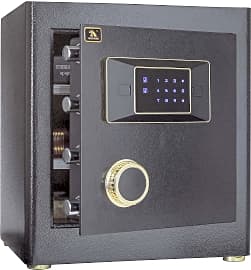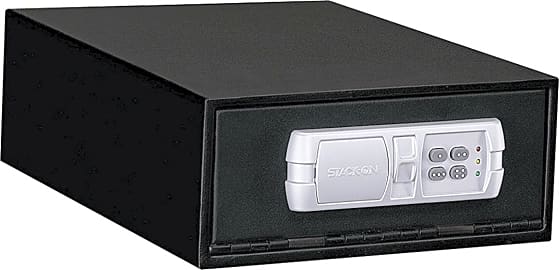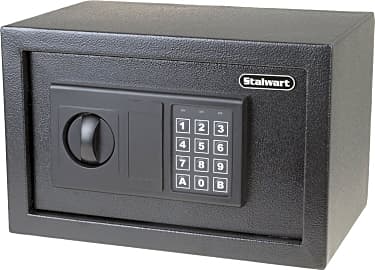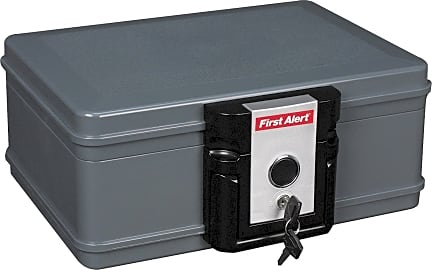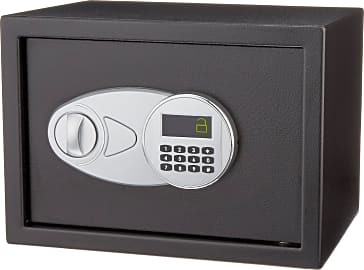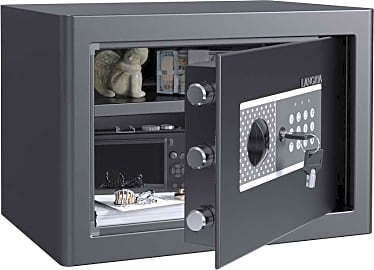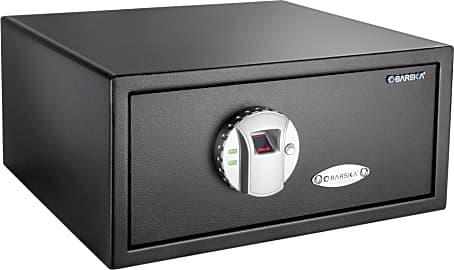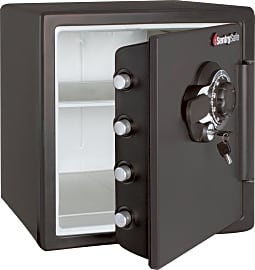The 10 Best Home Safes

This wiki has been updated 43 times since it was first published in April of 2015. Even if you don't have a ton of expensive jewelry or piles of cash lying around, we bet you've got a lot of stuff that would be better off not stored in a kitchen cabinet. These home safes provide security not just for valuables, but also for important items you want to safeguard from fire and floods, such as passports, birth certificates, and backup hard drives for your computer. When users buy our independently chosen editorial choices, we may earn commissions to help fund the Wiki.
Editor's Notes
May 29, 2019:
Our top two choices represent differing schools of thought on home safes. Our #1 pick, the Monster Vault, can be easily moved from place to place, offering you convenience and versatility. However, you might worry about it being carted off if you don't permanently mount it to something. On the other hand, the TigerKing Security is more stout, which means you'll likely have to pick one place for it and keep it there — but it's not likely to wander off. Whichever one is right for you depends on your preferences and needs.
And while we'd never dream of insinuating that you're absent-minded, it's worth making sure that the safe you choose has ways to be opened if you forget the combination. Most have emergency keys or reset buttons; just be aware of what you need to do before you're put in the position of having to do it.
Special Honors
Brown HD-Series With half-inch plated steel doors and quarter-inch plated steel walls, this option is certainly sturdy enough to put up a fight against even the most determined burglars. It's designed to protect against both tool- and torch-cutting methods of entry. brownsafe.com
Rhino Ironworks If you want something that's too intimidating for thieves to mess with, this option looks like it could withstand a couple sticks of dynamite. The distressed appearance is a nice touch, and it can protect your stuff for nearly an hour and a half at 1400°F. rhinosafe.com
Stockinger Cube This model is only about two feet tall, but weighs over 500 pounds, which should give you some idea of how stoutly-constructed it is. It has a silent alarm that can be linked in to your home's security system. Just be sure you have something truly valuable to stash inside it, because this could end up being the most expensive thing you have in your house. stockinger.com
Safety First
The problem with banks, though, is that they are subject to the pitfalls of macroeconomic fluctuations.
We all have things that are precious to us. There's no shame in wanting to preserve materials that have monetary, or even sentimental value. How we go about protecting those things depends on the items themselves and our general level of trust in institutions.
Many folks, for example, keep all their money in the bank, and their most beloved possessions in the same bank's available safety deposit boxes. These are especially useful if you're a secret agent and you need a difficult-to-trace spot to store some of your extra passports and currencies.
The problem with banks, though, is that they are subject to the pitfalls of macroeconomic fluctuations. Just ask the Greek citizens who were suddenly prevented from withdrawing more than a small amount of money each day, as the government attempted to slow the run on banks that occurred as their economy collapsed. We'd like to think such a thing could never happen to us, but it very well could.
So, a good safe in the home will keep your treasures close by, away from the manipulating hand of government and safe from fires and floods alike.
The workings of a safe are relatively simple. They are made from extremely dense metals, often weighing in at close to 100 lbs., even among smaller models, and their locking mechanisms are nearly impossible to crack.
Sure, there are ways to circumvent digital locks with some big brains and some very expensive technology, but–with all due respect–people possessed of those tools and skill sets probably aren't trying to boost your Facebook shares or your Beanie Babies.
Picking A Lock
The idea of a hidden safe excites me greatly. I like having a lot of art up on my walls, and someday I hope to have a nice safe hidden behind one of the larger frames. For the moment, I have next to nothing worth protecting in a safe, but the minute I get something, it's going in there.
Hiding a safe isn't just about security, either; it's as much about the look of a space as anything else. And that goes both for the safes you can seclude and the models you want on display.
Obviously, you need a safe that's big enough to house the largest prize inside, so that should be your baseline.
Say you're a bit of a huntsman with a beautiful, high school-aged daughter. Having a tall safe in your house displayed somewhere prominently ought to inform any of your daughter's potential suitors that you, indeed, have all the wealth and firepower necessary to dole out justice should he wrong your little girl in any way.
If you have valuables that are so important to you that you must hide even the fact that they're protected, you'll want a model that's designed to disappear. One such model on our list actually fits between your floorboards, so you can install it where few would think to look. Make sure you put something over it, though, like a desk or a small table; if one were to walk across it, the difference in footfall between the regular floorboards and those over the safe would give away its location.
The final considerations in safe selection are size and seal. Obviously, you need a safe that's big enough to house the largest prize inside, so that should be your baseline. Then, you should consider how you want your safe to lock. A talented thief with a good stethoscope can crack most traditionally locked safes, so the digital styles tend to be more secure. A safe that combines locking mechanisms would be best, however, and if there's a backup alarm to wake you in the night, even better.
Safe From Fire
Even more dastardly than the most talented of thieves, the truest threat to one's belongings before the advent of the modern safe was fire. Imagine where our collective intelligence as a species would be today if the library at Alexandria had had any kind of fire protection system in place.
Important scrolls found themselves buried against the blaze, entombed in slabs of stone and marble.
Important scrolls found themselves buried against the blaze, entombed in slabs of stone and marble. Caesar was known to have stored important documents in iron boxes, though they proved no more effective against flames than common wood.
By the 1830s, irons safes abounded with any number of fire-protective linings from stone, to plaster, to wood, and even asbestos. Still, they failed to do the kind of job we expect even a simple fire-proof box to do today.
No one conducted any significant, scientifically sound tests on fire-safe materials until the early 20th century, and the results of those tests revolutionized the design of personal safes as well as vaults in banks around the country.
Treasure chests of the 15th and 16th centuries employed crude iron locks to secure their contents against would-be thieves, though most of these locks could be picked or broken with enough time and effort. While the combination lock has been a functional idea since the 13th century, it wasn't until 1878 that a German man, conveniently named Joseph Loch, invented what we would recognize as today's modern combination lock. In short order, these locks found their way onto safes around the world, only to be replaced by digital versions some 100 years later.


